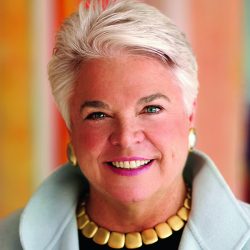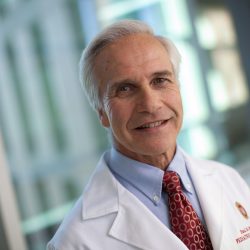From Hospital to Home
Research leads to a smoother transition for patients and caregivers.
When patients come home from the hospital after major surgery or a transplant, they are nowhere near ready to take care of themselves.
Family members often step in as the “unrecognized long arm of the hospital,” because specialized home nursing care can be too expensive, says Cameron Macdonald, an assistant professor of sociology and a scholar with the UW’s Institute for Clinical and Translational Research.
Macdonald has long been interested in the “blurry line” between hospital care and that given at home, which, she says, “we understand as being things we do out of love, not out of professional ability.” She learned about that line firsthand after her late husband received a bone-marrow transplant in 1999.
With a grant from the National Institutes of Health, Macdonald interviewed thirty families from Wisconsin and the Upper Peninsula of Michigan before bone-marrow transplants, during their hospital stays, and once patients returned home. She discovered something alarming: many patients were too sick to remember the instructions nurses provided before discharge.
“Even though the nurses do great training in the hospital, a lot of patients didn’t remember their hospitalizations because they were so ill,” she says.
Macdonald also identified situations where the caregiver and patient, once home, argued about when to call the doctor. That prompted UW Hospital’s bone-marrow transplant unit to develop a handout to post by the phone that details when to call 911, when to call the clinic immediately, and when to call the clinic within twenty-four hours. The unit also revamped patient education materials to clarify patient and caregiver needs, and present information in shorter sections.
“To get a whole big packet of stuff without some guidance … is overwhelming, and people tend not to read any of it,” says Bethaney Campbell, an oncology, hematology, and bone-marrow transplant clinical nurse specialist.
Macdonald recruited students enrolled in her medical sociology class to research and write drafts of instructions for patients and their families.
“It was the first time undergraduate sociology students were able to dig in and get into the hospital,” says Shannon Patterson ’10, a psychology and sociology major whose mother survived a bout with breast cancer after being diagnosed in summer 2009. “A lot of times you think, ‘Oh, sociology, how is that really connected to medicine?’ ”
Macdonald also recommended that the hospital develop classes and support groups for caregivers, allowing them to learn about day-to-day care that they haven’t been able to observe while patients are hospitalized because they have work obligations and are saving time off for helping at home.
“We need to be more accommodating of the caregiver — and their schedules and their needs — when they’re trying to work to maintain insurance,” Campbell says. “So I think that’s one thing that will definitely change our practice in the future.”
Published in the Winter 2010 issue



Comments
No comments posted yet.